What do you think of when you think of “downtown” or “Main St” in a general sense? For some, this brings images of Norman Rockwell paintings or, for something more recent, Star’s Hollow, quaint and cozy. For others, it may be taller buildings with more hustle and bustle. Either way, people typically think of “downtown” or “Main St” as the heart and soul of the city or town. Usually filled with a variety of shops, restaurants, and, most importantly, people. Now think of downtown Lexington. Does it draw forth the same images? I doubt it. For most Lexingtonians, downtown is a place to visit on occasion, usually for a game or show at Rupp Arena, a nice dinner or drink, and maybe even a visit to the farmer’s market. But this isn’t the nostalgic “day trip downtown”. It’s usually in and out, with maybe one other stop. Why would you do anything differently? downtown Lexington is, for all but a few exceptions, rather soulless. There’s no reason to stroll the streets, little retail, and even if you wanted to, it’s hardly a conducive environment for walking around. The reasons for this are many, but can be summed up in two points; downtown Lexington has too few small retail spaces and the majority of the pedestrian experience is terrible. Let’s get into details along with how we can start to fix these problems.
Lexington has a rather different problem compared to other similar-sized cities; where many cities suffer from disinvestment in their downtown core resulting in vacant storefronts, Lexington doesn’t even have that many storefronts to begin with. This lack of small retail space has many side effects. First, this hampers small, growing retailers. Someone may have started a small business in their basement or garage but once they outgrow that space, they find their options limited. They most likely can’t immediately jump into a larger retail space with the heavier rent they command, but the spaces they can afford are spread throughout the city, usually in an older strip mall. This immediately puts the shop at a disadvantage compared to a walkable location. The shop’s discoverability is hurt as they are dependent on people already knowing about them before visiting because people are significantly less likely to see them and pull off the road on impulse. Compare this to a walkable cluster of small shops and the business has a much larger chance of getting impulse shoppers. The businesses benefit from each other’s customers due to proximity, leading to people window shopping. You’re more likely to notice a small shop when you walk by on the sidewalk than you are driving by >30mph.
But why does downtown Lexington have so few shop spaces? Lexington used to have them, along with the fine-grained urbanism that accompanies them. You can see it in old photos and postcards, along with plenty of people milling about. Then downtown saw massive redevelopment through the 70s and 80s. This is when the massive office buildings went in. PNC Tower, Central Bank, the Hilton, and more were all built between 1972 and 1987.
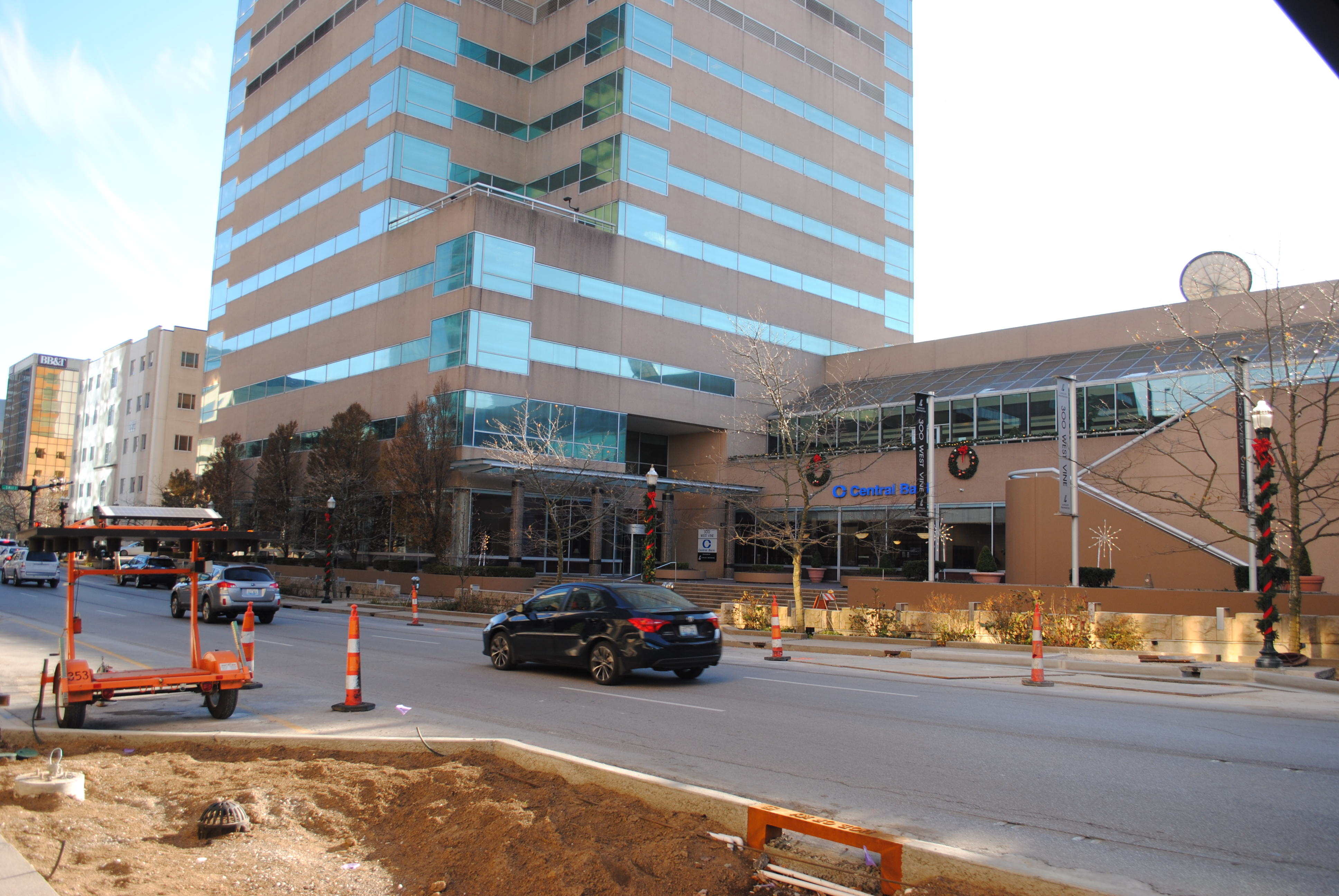
These buildings with their massive footprints, sometimes the majority of a block, wiped out the old narrow storefronts. We saw this recently play out with City Center, aka Centerpointe; an entire walkable block leveled and replaced with offices and hotels. What little retail was redeveloped is too large for any small business that isn’t a chain.
Also, all those big offices built parking, tons and tons of parking. Which led to more fine-grained urbanism being torn down to replaced with blank expanses of surface parking.
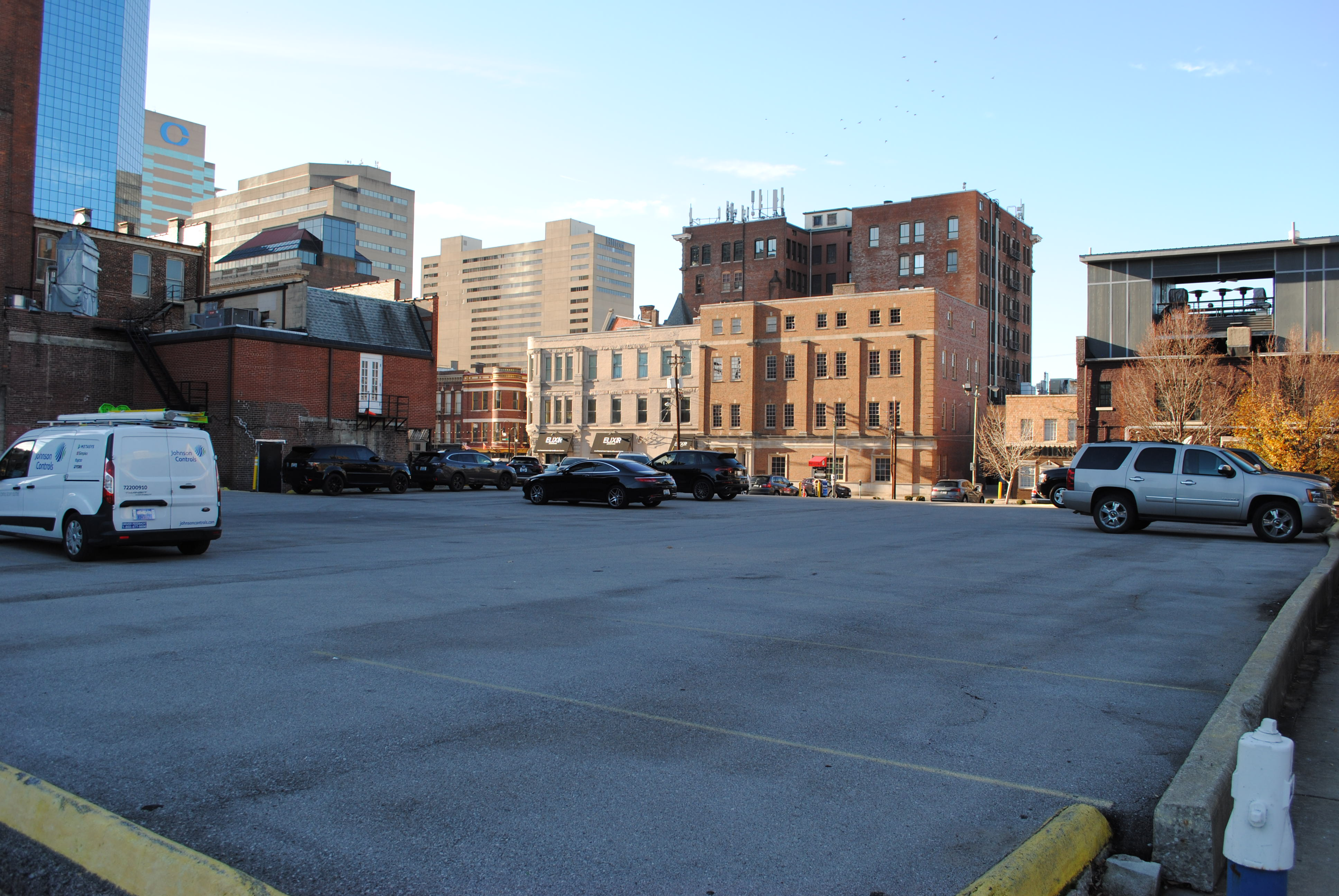
Or “missing teeth” in our streetscapes.
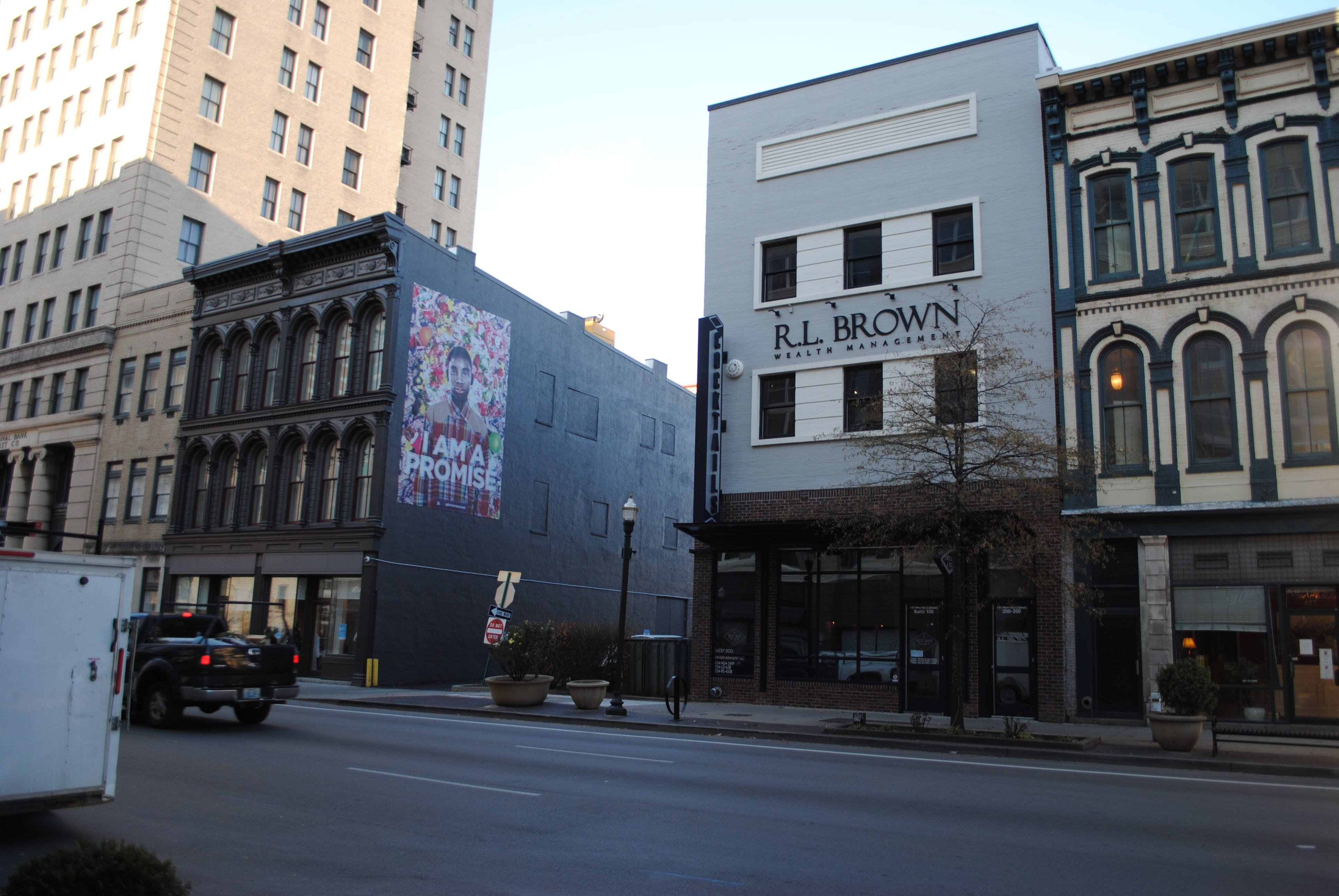
What’s almost worse than losing a bunch of existing, walkable retail space is what replaced it. With all that redevelopment came two design decisions that kill the street experience for pedestrians; mirrored windows and blank concrete walls.

Whether it’s an office tower with the ground floor being 90% mirrored glass or just vast expanses of blank concrete walls, it turns the building into an uninteresting void. There’s nothing to look at and nothing that grabs your attention as you walk by.
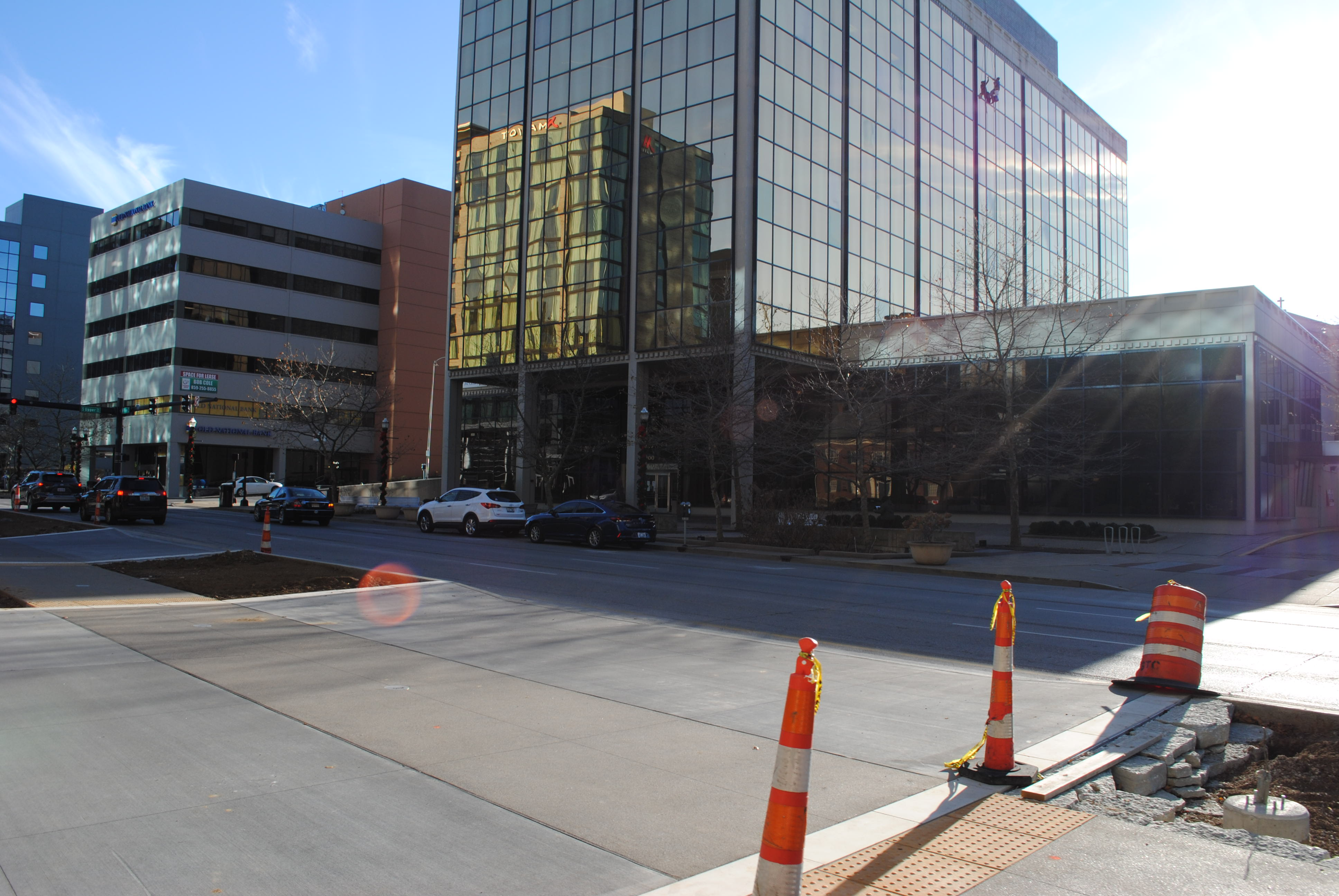
This is important because it takes very little to dissuade someone from strolling around. You can see this today by watching the areas that mostly dodged the redevelopment, Short St. and Tandy Park. When the farmer’s market sets up in the pavilion you will see tons of people around, but they don’t wander far. Why would they? There are only restaurants around Short Street and even if you endeavored to cross the highway that is Main Street, all you’d be greeted with is a soulless parking garage and the blank Big Blue Building. Overall, our downtown is not built for strolling around. This isn’t to say that office towers and hotels don’t belong downtown, they most certainly do. But how they interact with the street has a massive impact on the feel of downtown as a whole.
A walkable, and more importantly, livable downtown requires good street experiences. This comes from having a variety of buildings and uses. Window shopping requires windows, ones that you can see through. There remain some good examples downtown, like The Clock Shop or the Pam Miller Downtown Arts Center, but they are few and quite literally far between.
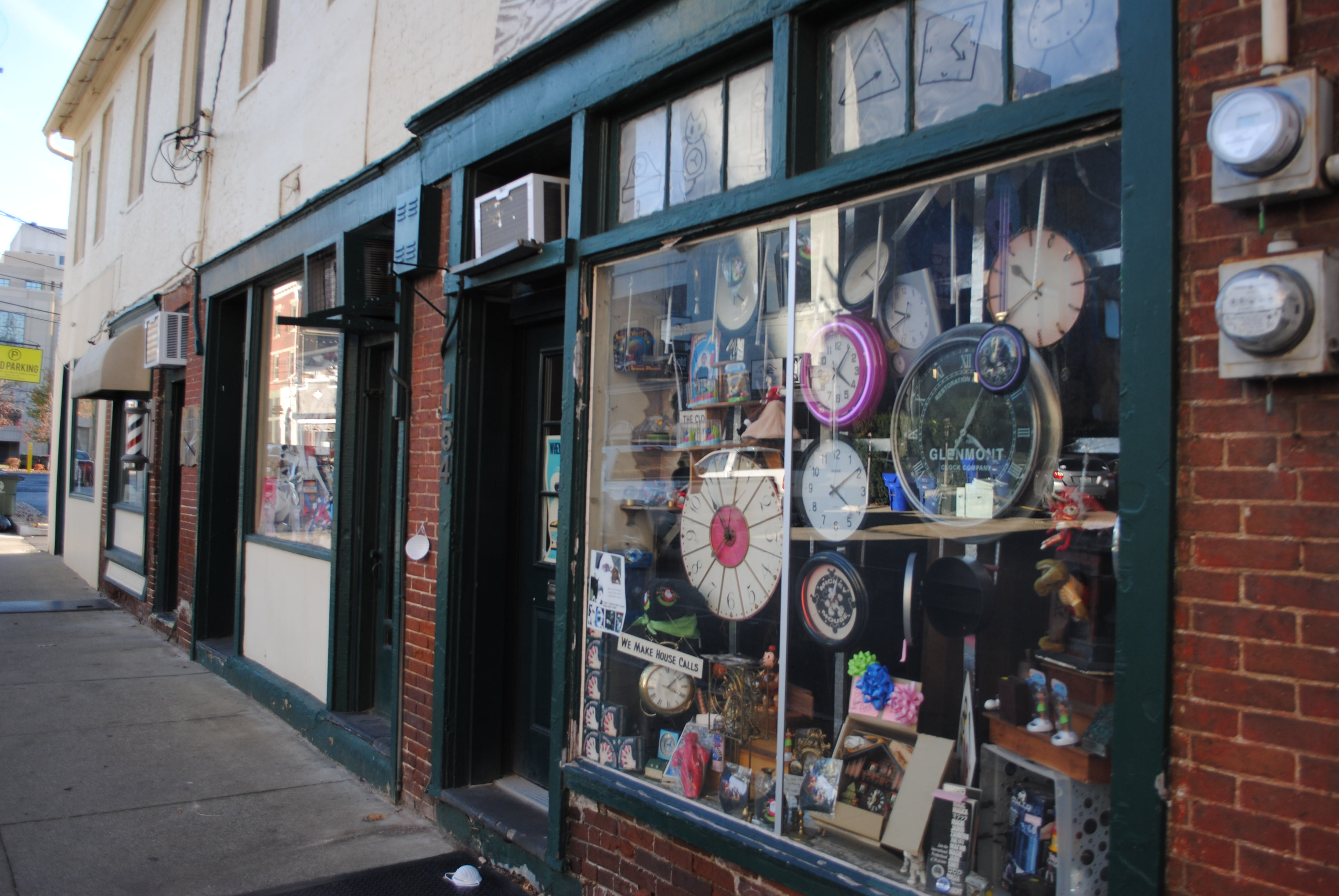
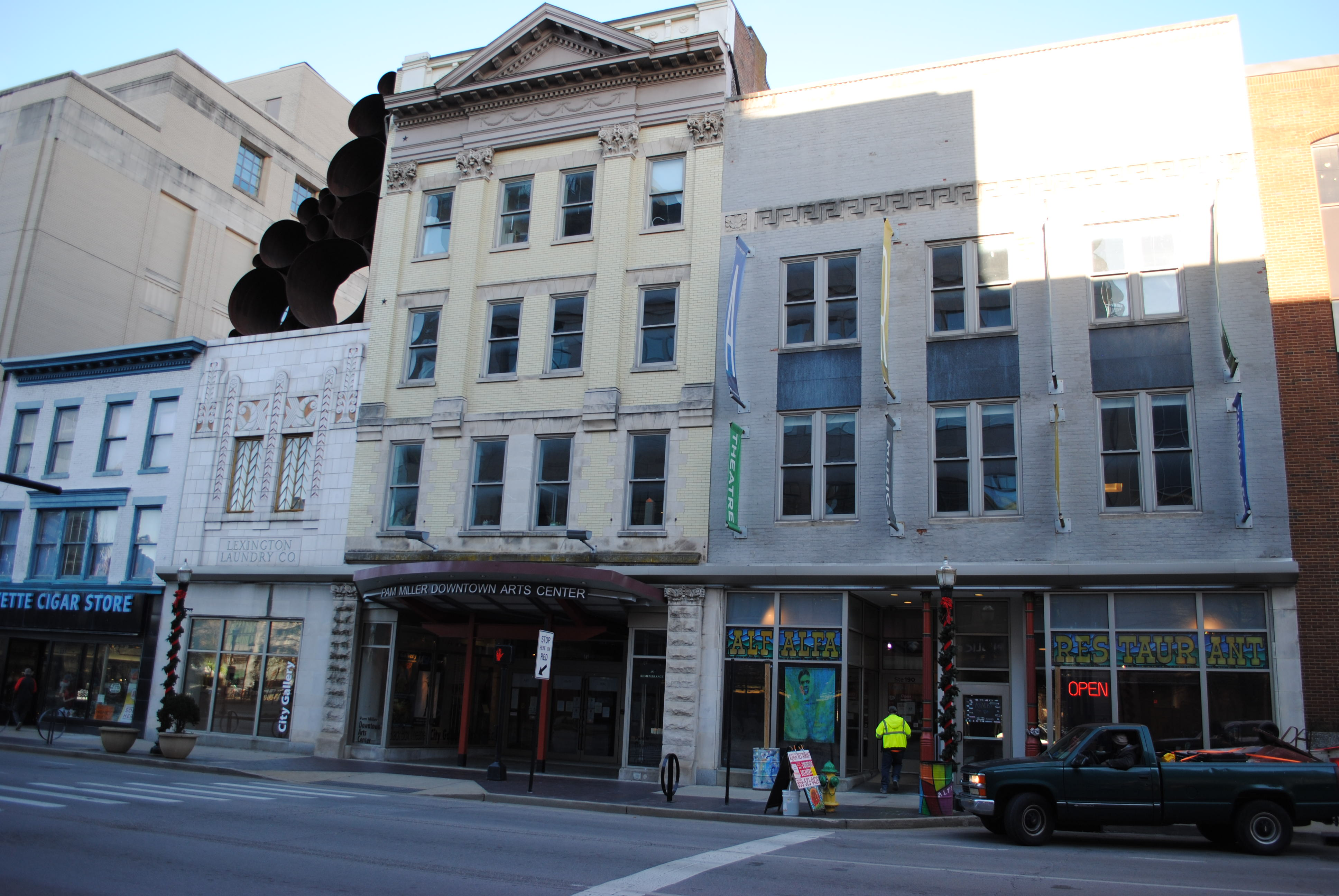
But you can also see it in one of the places that helped take investment away from downtown, Fayette Mall. Why do you think they chose to redevelop the large old Sears space into a bunch of smaller spaces? That variety keeps you walking and wondering what’s around the corner. All the shops have windows and displays to entice people to enter. Now imagine the experience of shopping at a mall where there maybe a couple of clusters of small shops but in between are just blank walls and mirrored windows. That’s essentially what our downtown is, in addition to the high-speed car traffic.
So how can we go about fixing this? As much as I’d love to tear down some of the truly bland office towers, their massive size means it would be extremely expensive to redevelop them. So I’d propose a simpler, cheaper, and more incremental approach. We should see to redesigning and redeveloping just the ground floors of the buildings, specifically to build smaller retail spaces. The city can incentivize this sort of development with restrictions against reflective ground floor windows (maybe even second floor) and putting caps on ground floor unit square footage. This still requires buy-in from the property owners but at the very least it will hopefully prevent any additional terrible ground floors from being built.
Another thing that we can look at is the iconic Kentucky Theater
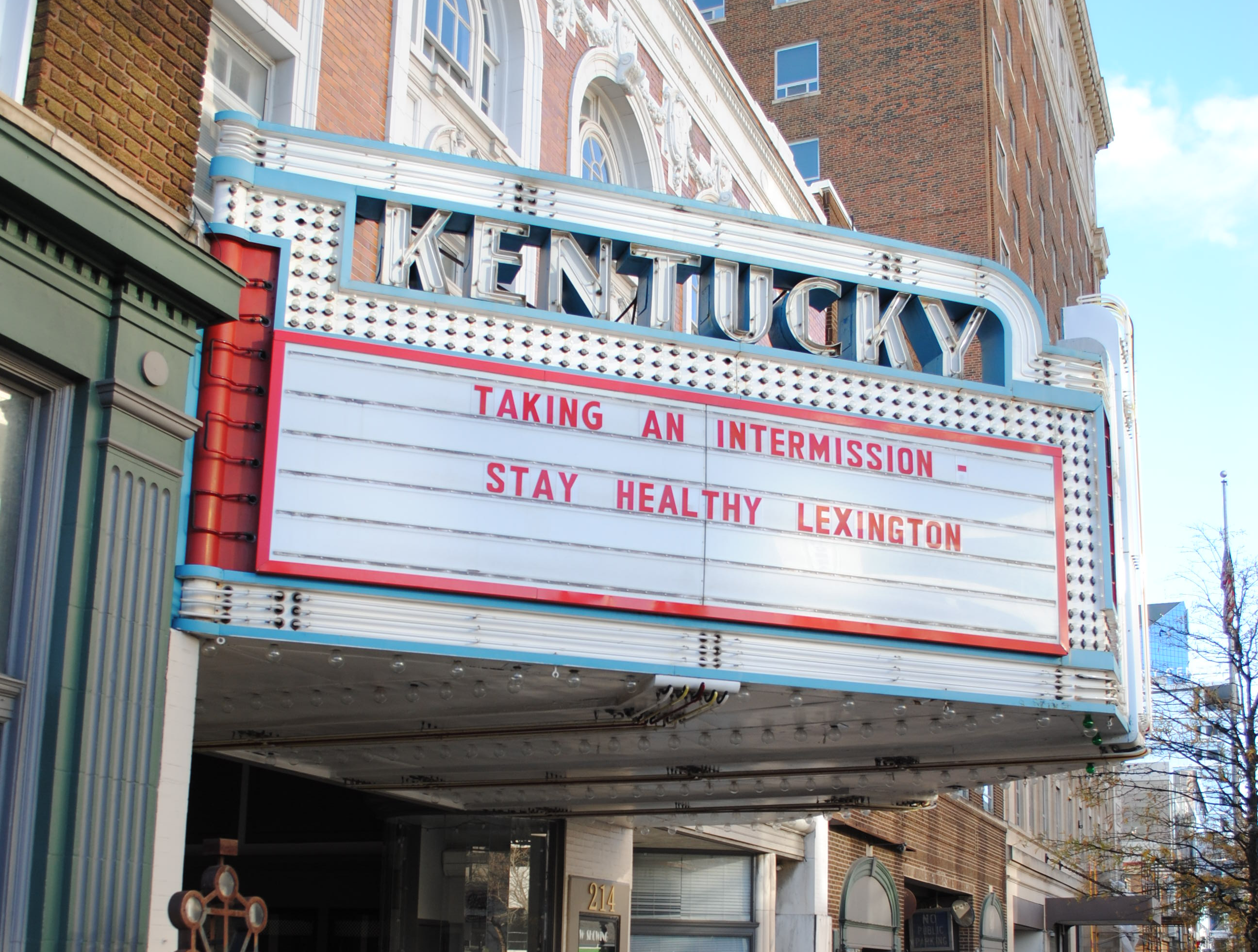
A great local amenity, right in the heart of downtown. It’s the perfect “pull” to bring people downtown. But what’s next door?
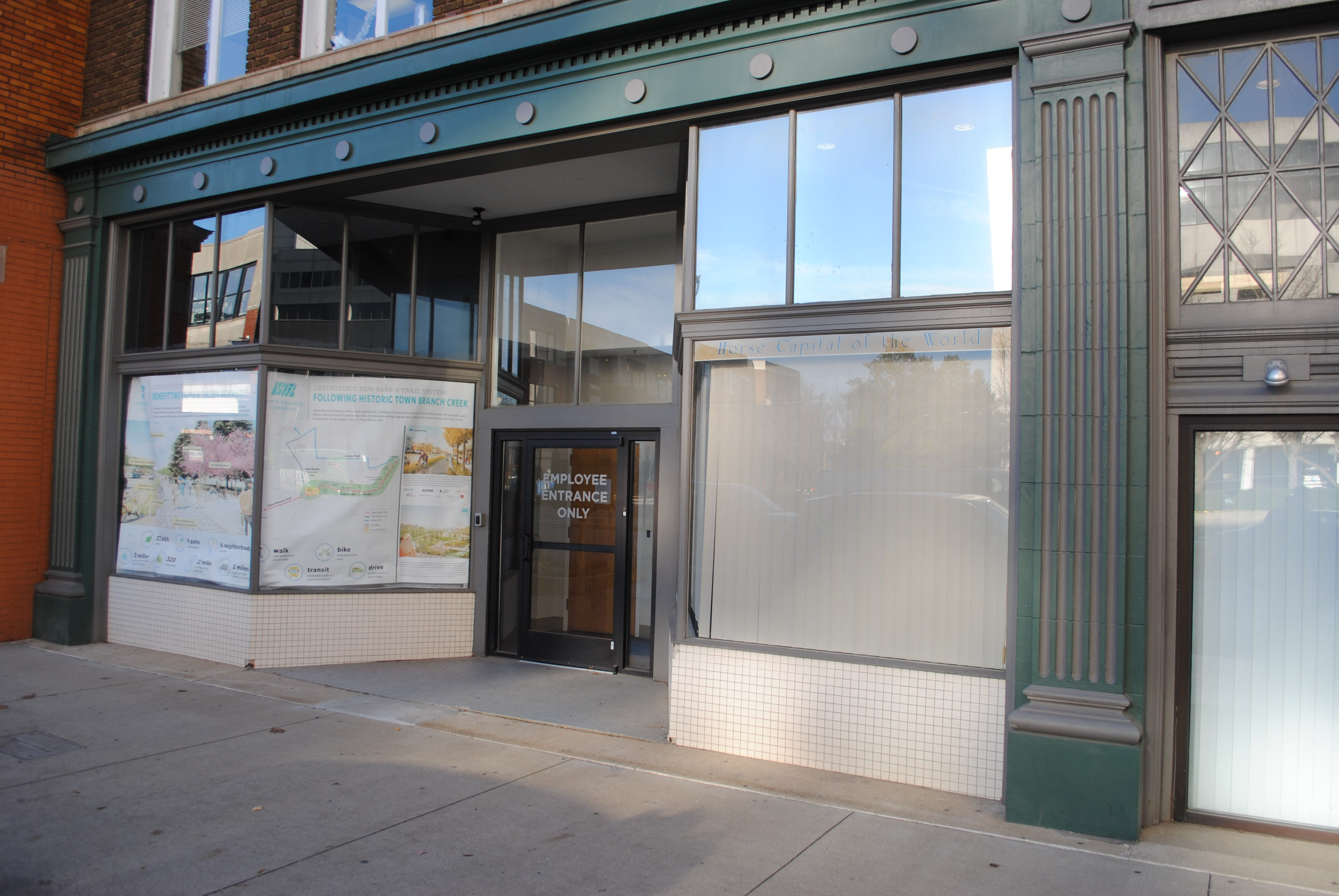
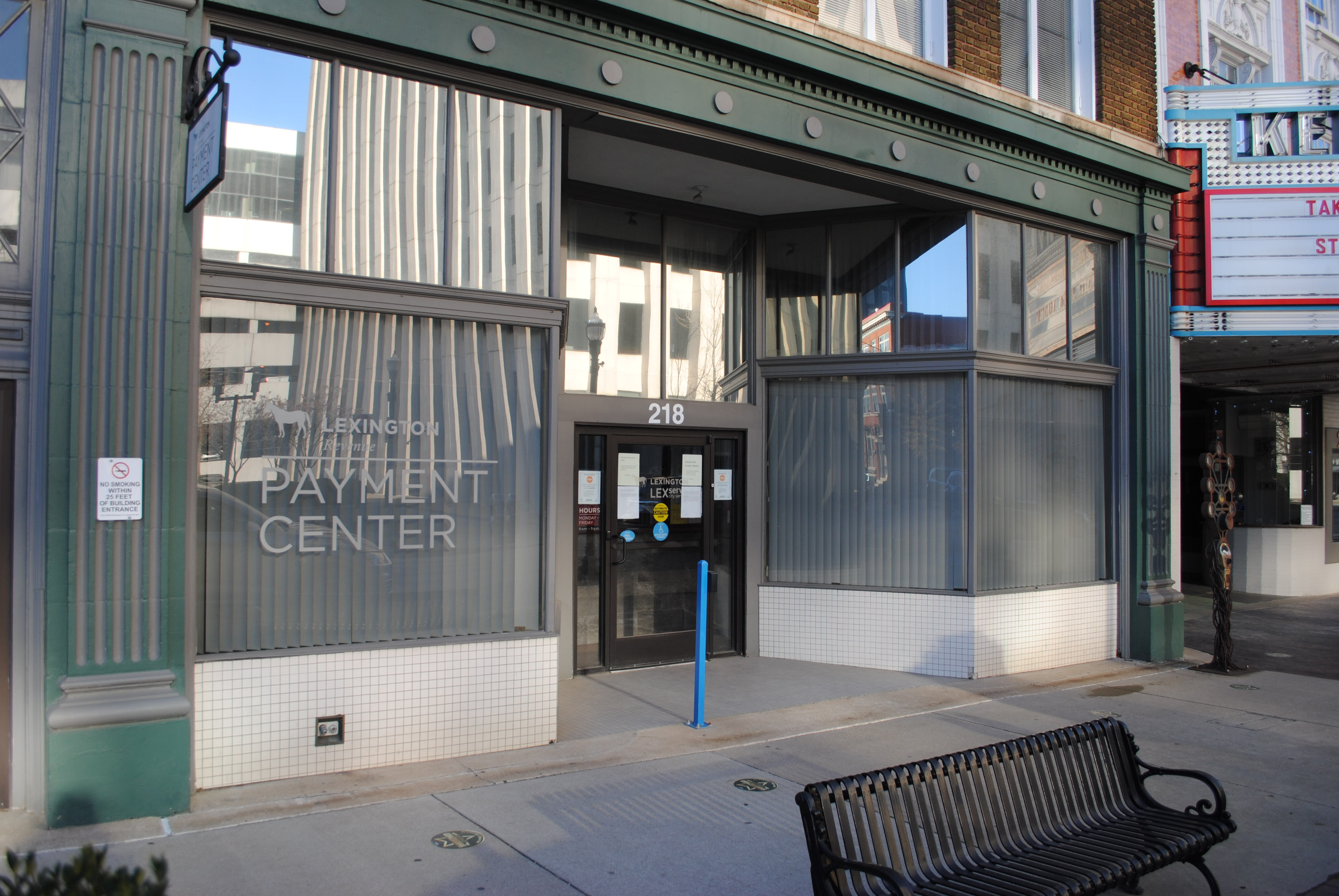
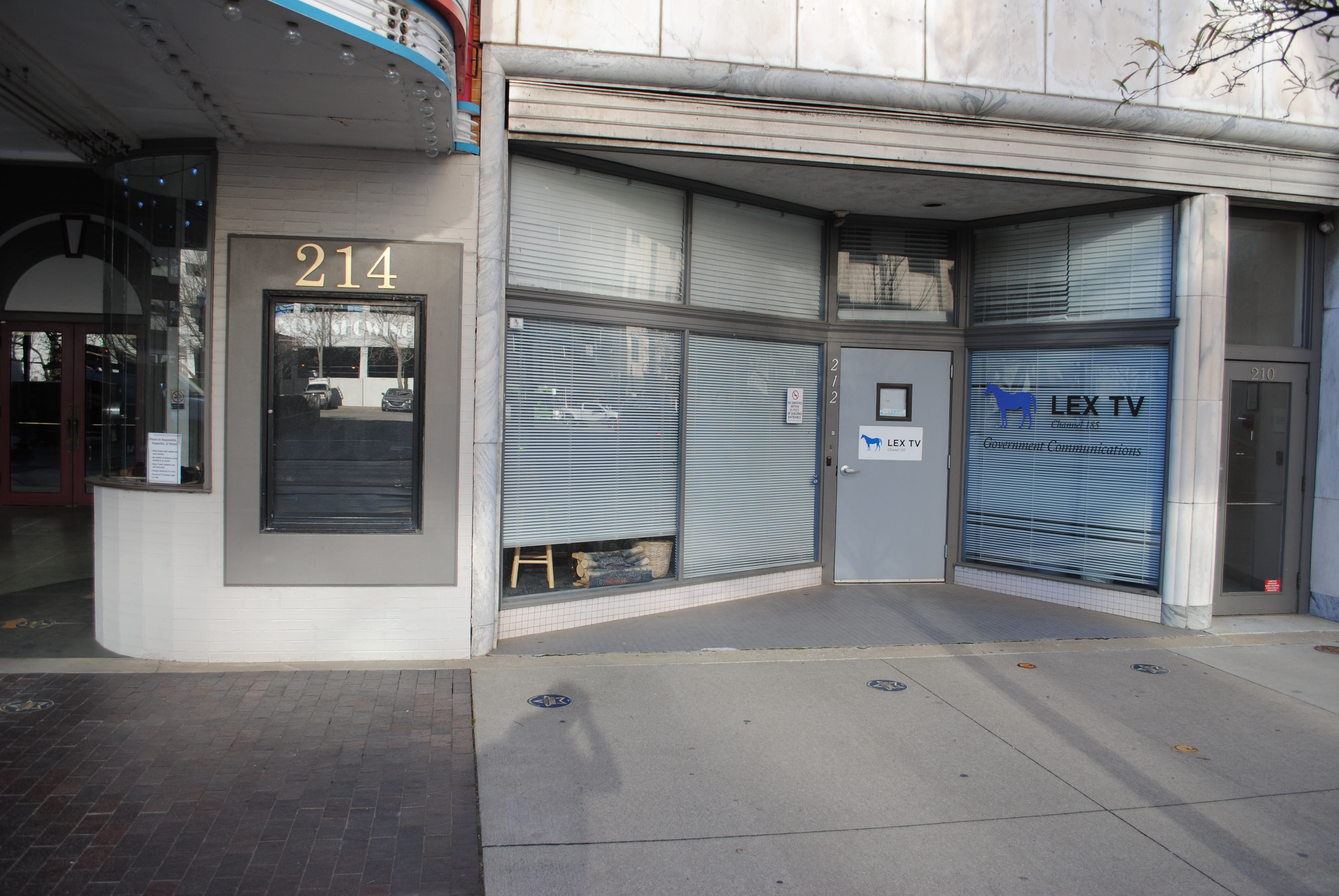
It’s surrounded by storefronts that have been converted into government offices with blinds that are perpetually closed. The irony of advertising the pedestrian and streetscape improvements happening one street over while contributing to the lack of activity on Main St. is something else. This could be a huge opportunity for the government to convert these places back to storefronts and rent them out. Give the government some revenue and contribute to a more vibrant Main St.
We are also grossly overparked. A tremendous amount of space is wasted for car storage during the day, which is then empty at night. We should look into policies that can dissuade surface parking lots and encourage better use of the land.
If we want a truly walkable and livable downtown, we have to make sure that the built environment is conducive to that. Having shops spread out with nothing but parking, blank walls, and mirrored glass between them leads to a soulless downtown. We need to ensure that we have buildings that contribute to downtown and don’t turn their back to the street. We need to ensure that we have spaces for the small shops and businesses that make a street lively and vibrant. We need to make downtown a place where people want to live and linger, not just drive through.